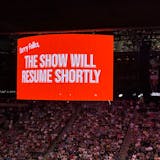Maggie McCaffrey works as a barista in Minneapolis and rarely clears a living hourly wage, even with tips. She is having trouble paying down her student loans, and asks: "In what other industry are customers expected to pay the worker's wage?"
So Maggie joined the Fight for $15 — the movement that has taken hold across the country. Faced with more than three decades of stagnating wages, workers have raised their voices with the simple request that their work should pay enough for them to have a decent living. Minneapolis leaders have heard their call and are poised to raise the minimum wage. But the debate recently has centered around how to count tips ("City leaders: Will you leave a tip credit?", June 11).
As the City Council vote approaches, I'd like to address a few common myths on the minimum wage:
The first myth is that we need a lower wage for tipped workers.
Tipped workers are some of the poorest in the country, being three times more likely to live below the poverty line. For female servers, who make up two-thirds of the tipped workers, it's even more difficult to get by since they are paid 70 percent of what their male counterparts make. Tipped workers are also heavily people of color, deepening the existing racial wage gaps in our community. And no worker should have to audition on a regular basis simply to earn the minimum wage.
This is why I introduced the Raise the Wage Act last month to raise the federal minimum wage to $15 an hour from the current $7.25 per hour and to eliminate the unfair lower federal minimum wage for tipped employees — currently a shameful $2.13 per hour.
With the help of workers and organizers, the Raise the Wage Act has more than 150 cosponsors in the House and 30 Senate cosponsors (including both Minnesota senators).
Unlike the federal government, Minnesota has been for more than 30 years one of the few states that does not have a separate, subminimum wage for tipped workers. That is something I am proud of and I know many other Minnesotans are, too.
